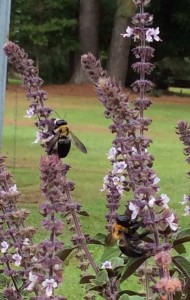Fall Vegetable Garden
go.ncsu.edu/readext?419356
en Español / em Português
El inglés es el idioma de control de esta página. En la medida en que haya algún conflicto entre la traducción al inglés y la traducción, el inglés prevalece.
Al hacer clic en el enlace de traducción se activa un servicio de traducción gratuito para convertir la página al español. Al igual que con cualquier traducción por Internet, la conversión no es sensible al contexto y puede que no traduzca el texto en su significado original. NC State Extension no garantiza la exactitud del texto traducido. Por favor, tenga en cuenta que algunas aplicaciones y/o servicios pueden no funcionar como se espera cuando se traducen.
Português
Inglês é o idioma de controle desta página. Na medida que haja algum conflito entre o texto original em Inglês e a tradução, o Inglês prevalece.
Ao clicar no link de tradução, um serviço gratuito de tradução será ativado para converter a página para o Português. Como em qualquer tradução pela internet, a conversão não é sensivel ao contexto e pode não ocorrer a tradução para o significado orginal. O serviço de Extensão da Carolina do Norte (NC State Extension) não garante a exatidão do texto traduzido. Por favor, observe que algumas funções ou serviços podem não funcionar como esperado após a tradução.
English
English is the controlling language of this page. To the extent there is any conflict between the English text and the translation, English controls.
Clicking on the translation link activates a free translation service to convert the page to Spanish. As with any Internet translation, the conversion is not context-sensitive and may not translate the text to its original meaning. NC State Extension does not guarantee the accuracy of the translated text. Please note that some applications and/or services may not function as expected when translated.
Collapse ▲The summer heat and humidity often cause our gardens to languish, but it doesn’t need to be that way. July and August are an excellent times to plant vegetables and herbs for harvest through the fall and even into the winter months.
Mid-July is a good time to reenergize your garden by planting a second round of warm season crops. You can replant bush beans, pole lima beans, and tomatoes (especially if you lost plants to TSWV earlier in the season). When choosing varieties, look for options with short “days to maturity” to ensure you harvest before the first frost. When choosing tomatoes, determinant varieties such as Celebrity and Amelia are a good option since they set and ripen their fruit in a relatively short window. So you can harvest more fruit before the first frost. Consider replanting if you lost your summer squash or zucchinis to squash vine borers. We are past the flight period for these moths in our area, so while you will have other issues to look out for, squash vine borers shouldn’t be one of them.
Set out a couple of new basil plants to replace your early crop, which will be going to flower by now. Let the old basil plants flower. Basil flowers are a favorite of bees and other beneficial insects. Now is also a good time to start cool season root vegetables with a longer growing season, such as carrots and rutabagas.
In mid to late August, you can plant cauliflower, broccoli, collards, cabbage and turnips. These members of the mustard family will grow well past the last frost. I find they do best as transplants at this point in the season. Keep a close eye on them and stay one step ahead of caterpillars through regular scouting. Applying a product containing Bt (Bacillus thuringiensis) or spinosad at the first sign of caterpillar damage will protect your crop while minimizing the impact on beneficial insects. Another option is to cover the row with a fabric row cover. Row covers physically prevent pests from reaching your crop. Just remember that you will need to scout regularly under the row cover to ensure that pesky bugs don’t make their way under the cover and have a field day in the protected area underneath.
Try planting a round of edible pod peas like sugar snaps or snow peas. While they don’t appreciate the warm weather at the end of summer, they will produce well past the first frost in the fall.
Herbs such as dill, cilantro, and parsley grow best during the cooler weather of fall and spring. Starting in mid to late August, make several plantings two to three weeks apart for a consistent supply.
Just remember to save a little space in the garden because early September is an excellent time to plant cool-season crops with a short growing season. Radishes, lettuce, and spinach will be ready to harvest within a month or two of sowing. Harvest lettuce and spinach as “cut and come again” crops to harvest earlier and extend your harvest window. When the new seedlings get up to 3-4 inches tall, cut them with a set of kitchen shears being careful not to damage the growing point at the base of the plant. These little plants will resprout and can be harvested this way 3 or 4 times. Put out onion sets and garlic cloves in September or October for harvest next spring.
With a little bit of planning, you can harvest vegetables out of your garden every month of the year in coastal North Carolina!





